Are you puzzled about the difference between black and pinto beans? Many people are unsure about the differences between black beans and pintos with their unique flavors, nutritional values, and best uses in cooking.
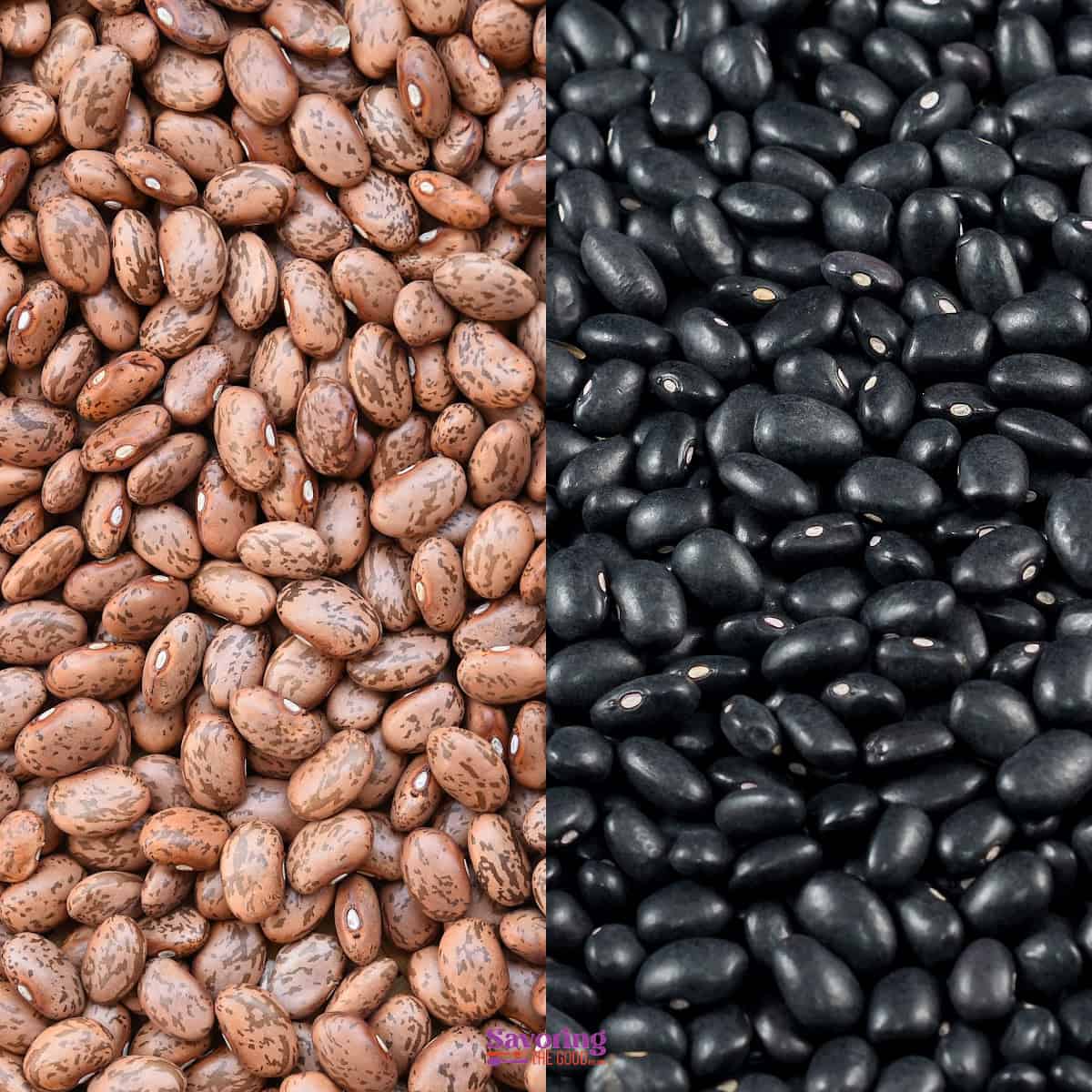
Jump to:
- Want To Save This Recipe?
- 🫘 Differences Between Back Beans vs. Pinto Beans
- Culinary Applications of Black Beans and Pinto Beans
- 🫘 Black beans: stews, chilis, curries
- 🫘 Pinto beans: mashed beans, refried beans, soups
- Nutrition Comparison: Black Beans vs Pinto Beans
- Black beans nutrition
- Pinto beans nutrition
- 🌯 Are black beans or pinto beans better in a burrito?
- 💨 Are pinto or black beans more gassy?
- FAQs
- Are black or pinto beans easier to digest?
- Can I substitute black beans for pinto beans?
- Which is healthier: Pinto bean or Black bean?
- Are there specific dishes that require either black or pinto beans?
- Homemade Ingredients
- Want To Save This Recipe?
- 📖 Recipe
- 👩🏻🍳 Sarah Mock
- Comments
🫘 Differences Between Back Beans vs. Pinto Beans
Black beans have a sweeter flavor, smaller size, and heartier texture compared to pinto beans which have a creamier texture, milder taste, and larger size.
Black beans are small yet impactful when it comes to their robust taste. They have this unique, slightly sweeter flavor that distinguishes them from other beans. Despite being smaller in size, they pack quite a punch with their hearty texture.
Their dark color hints at the rich, deep flavors contained within each bean. Every bite of a cooked black bean rewards you with a firm and chewy experience due to its thicker skin.
Pinto beans stand out in the bean family due to their larger size and unique texture. They are considerably bigger than most other types, especially when compared to black beans. Besides just being more substantial, these beans offer a creamy texture that lends itself well to certain dishes.
This creaminess is exceptionally distinct after cooking, as it contributes significantly to the overall consistency of meals.
In addition to their physical attributes, pinto beans have a more subdued flavor profile that can be described as mild. Unlike black beans which carry a robust taste, pinto's comparatively milder taste works harmoniously with various foods without overpowering them.
The understated nature of this flavor makes them an excellent candidate for those who prefer subtle tastes or wish to experiment with seasonings and spices creatively. With their soft creamy feel and gentle flavor touches; the spotlight on pinto beans continues to grow in diverse culinary landscapes globally.
Culinary Applications of Black Beans and Pinto Beans
Black beans are commonly used in stews, chilis, and curries, while pinto beans are often mashed or refried for tasty side dishes or added to soups.
🫘 Black beans: stews, chilis, curries

Black beans hold their own in a variety of dishes due to their robust taste and hearty texture. The small, sweet tasting bean has found its place in many traditional recipes, including:
- Stews: Black beans add a thickness and richness to stews, making them more filling.
- Chilis: They form the backbone of many chili recipes, bringing in depth of flavor and a satisfying bite.
- Curries: Their dense bite provides contrast to the typical creamy sauces found in curries. Their slightly sweeter flavor also adds complexity to these spice-laden dishes.
- Black Bean Soup:
🫘 Pinto beans: mashed beans, refried beans, soups
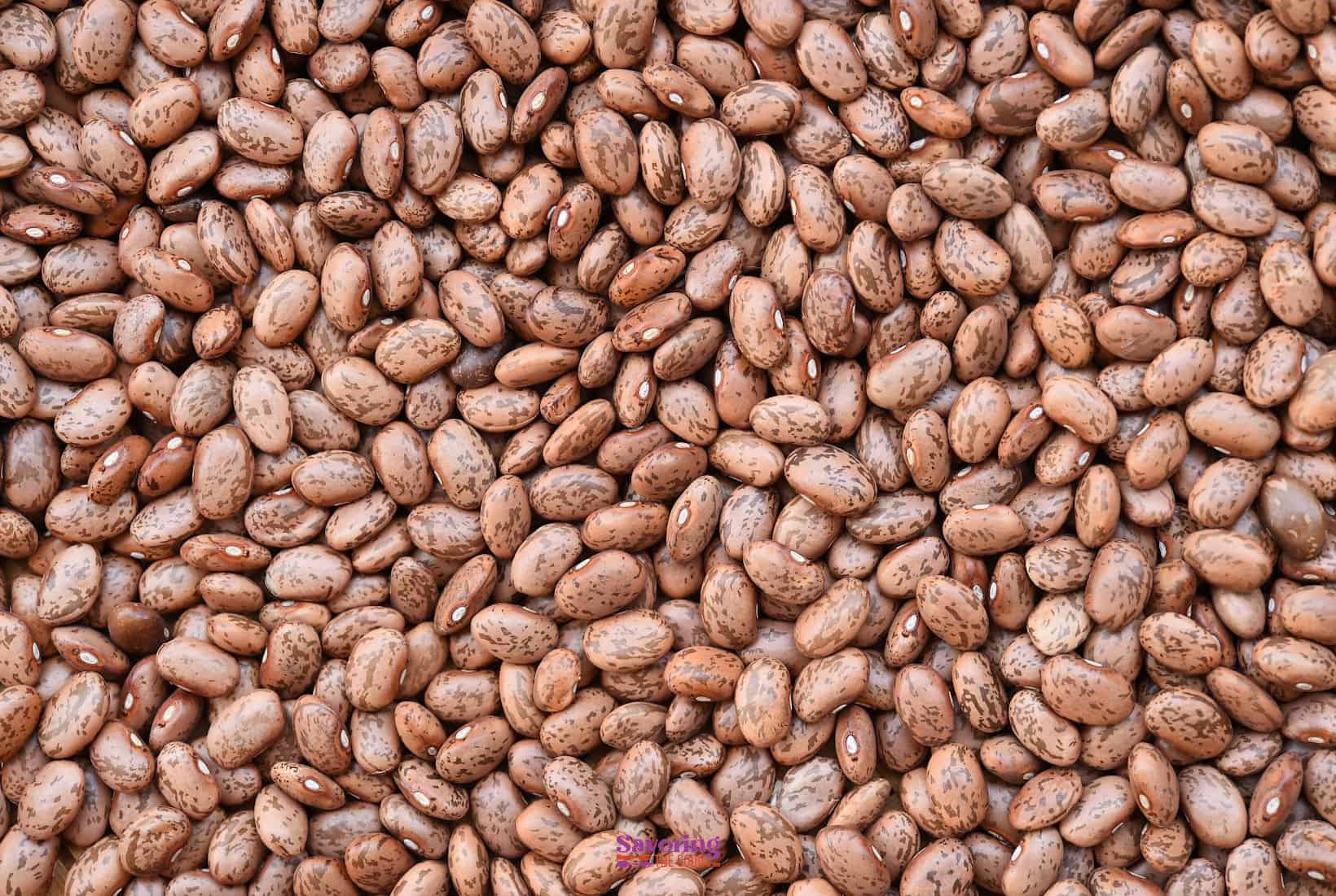
Pinto beans are incredibly versatile and can be used in a variety of culinary applications. They can be mashed into a smooth consistency, making them perfect for spreads and dips. Pinto beans are also commonly used to make refried beans, a staple in Mexican cuisine. Additionally, pinto beans add a hearty and creamy texture to soups and stews. Their mild flavor allows them to easily absorb the flavors of other ingredients, making them an excellent choice for adding depth to your favorite recipes. Whether you're looking for a creamy spread, flavorful refried beans, or a hearty addition to soups, pinto beans are the perfect option.
Nutrition Comparison: Black Beans vs Pinto Beans
Both black beans and pinto beans are high in protein and fiber, but they have slightly different nutritional profiles. Black beans contain higher levels of magnesium and potassium, while pinto beans are a great source of folate.
Both high in protein and fiber
Pinto beans and black beans are both excellent sources of protein and fiber. These nutrients play a crucial role in maintaining overall health and supporting digestion. Protein is essential for building and repairing tissues, while fiber helps to promote feelings of fullness, regulate blood sugar levels, and improve digestive regularity.
Whether you choose pinto beans or black beans, incorporating these legumes into your diet can provide a nutritious boost to any meal.
Black beans nutrition
Black beans are packed with essential nutrients, particularly magnesium and potassium. These minerals play a vital role in maintaining overall health and proper bodily functions. Magnesium is necessary for muscle function, nerve transmission, and energy production, while potassium helps regulate blood pressure and heart health.
By incorporating black beans into your diet, you can easily boost your intake of these beneficial minerals and enjoy their numerous health benefits.
Pinto beans nutrition
Pinto beans are a great choice if you're looking to increase your folate intake. Folate is an essential B-vitamin that plays a key role in cell growth and development, making it especially important for pregnant women.
Pinto beans contain folate, providing you with a natural source of this important nutrient. By incorporating pinto beans into your diet, you can support the healthy functioning of your cells and promote overall well-being.
🌯 Are black beans or pinto beans better in a burrito?
Both black beans and pinto beans are the most common bean filling for burritos, but there are some differences in how they affect the flavor and texture of a burrito:
Black beans have slightly firmer texture and chunkier consistency compared to pinto beans when mashed. This can provide a more substantial mouthfeel and heartier bite to a burrito filling. Their earthy, robust flavor stands up well to spicy seasonings and bold ingredients often found in burritos. However, some find black beans to be a little heavier or more overpowering than pinto beans.
Pinto beans become creamier and smoother when mashed, leading to a softer texture and looser consistency in burrito fillings. Their milder flavor allows other seasonings, meats, rice, etc. to shine through. However, some find the flavor and texture of pinto beans can get lost amongst the other strong ingredients in a packed burrito.
Both beans have a place in Latin American and Spanish-influenced cuisines, local traditions have often favored one variety based on its texture and flavor profile. These preferences continue to shape how the beans are used in different regional dishes today.
- In Mexican and Tex-Mex cuisine, pinto beans are most traditionally used for dishes like burritos, tacos, nachos, etc. Their pinkish hue and smooth texture suit the other ingredients and spices used in these foods.
- Black beans are more prominently featured in Cuban, Brazilian, and Dominican cuisines. Their robust flavor stands up well to tropical seasonings and ingredients like rice, peppers, and coconut milk.
- Across the southern United States, canned beans are popular ingredients, with black beans sometimes favored in Creole and Cajun cuisine.
- In Central and South America, black beans and pinto beans are both widely used. Black beans may be a bit more common in many Brazilian, Cuban and Caribbean dishes.
- Pinto beans are one of the most popular beans in Mexican cuisine and are deeply ingrained in the food culture. The creamy pink beans suit the flavors well.
- In Spain, the white beans called "alubias" are traditionally used over black beans or pintos for dishes like fabada asturiana.
💨 Are pinto or black beans more gassy?
Black beans tend to be more gassy for most people due to their higher oligosaccharide content. But pinto beans can also cause gas if not prepared properly. Black beans tend to produce more gas because they contain more indigestible sugars called oligosaccharides. These sugars are broken down by gut bacteria which produces gas. Pinto beans have fewer oligosaccharides and less fiber/starch, so they are generally less gassy. However, pinto beans have more lectins which some people find harder to digest, causing gas. Cooking and soaking beans well can reduce lectins and oligosaccharides and make both types easier to digest.
FAQs
Are black or pinto beans easier to digest?
Both black beans and pinto beans are relatively easy for most people to digest, especially when cooked thoroughly. However, black beans contain slightly higher amounts of fiber and resistant starch, which can make them harder to digest for some individuals, potentially causing more gas or bloating. The higher fiber in black beans also means they have a lower glycemic index, so they are digested more slowly and cause a slower rise in blood sugar. Pinto beans have moderately high fiber too but generally less than black beans. This means pinto beans have a moderately high glycemic index, so they are digested quicker and can spike blood sugar faster.
People with digestive conditions like IBS may tolerate one type of bean better than the other, but both can be introduced gradually in small servings to assess digestibility. Overall, both beans can be part of a healthy diet for most people, as long as they are prepared properly and fiber intake is increased incrementally to aid digestion. Focusing on thorough cooking and gradually increasing portion sizes can help with digesting either bean variety.
Can I substitute black beans for pinto beans?
Yes, you can substitute black beans for pinto beans or vice versa depending on your preference and recipe requirements.
Which is healthier: Pinto bean or Black bean?
Both pinto and black beans have their own nutritional benefits; choosing one depends on your specific dietary needs.
Are there specific dishes that require either black or pinto beans?
Certain traditional recipes may call for either black or pinto beans due to their unique flavor profiles but most times both of them would work just fine interchangeably.
Homemade Ingredients
- Homemade Teriyaki Sauce Recipe
- Scapes: What Are Garlic Scapes and How To Cook With Them
- Caraway Seed Substitutes 🫙 Good Substitute For Caraway Seeds
📖 Recipe
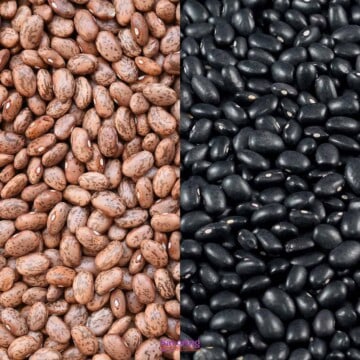
Pinto Beans Vs. Black Beans 🫘
There is more to a recipe than just the recipe card. Frequently Asked Questions within the blog post that you may find helpful. Simply scroll back up to read them!
Nutrition Disclosure
Nutritional facts are estimates and are provided as a courtesy to the reader. Please utilize your own brand nutritional values to double check against our estimates. Nutritional values are calculated via a third party. Changing ingredients, amounts or cooking technique will alter the estimated nutritional calculations.

👩🏻🍳 Sarah Mock
CEO/Owner/Founder/Culinary Blogger
Sarah Mock is a classically trained Chef and graduate of Johnson & Wales University. A culinary blogger for 14 years Sarah helps the home cook prepare her recipes with professional results.

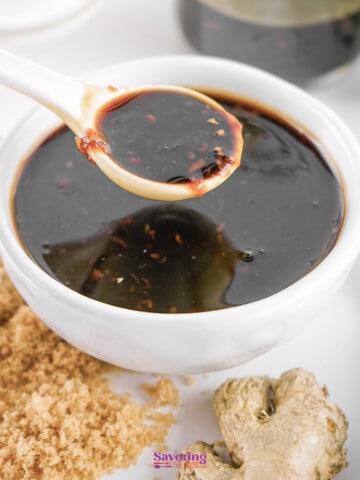


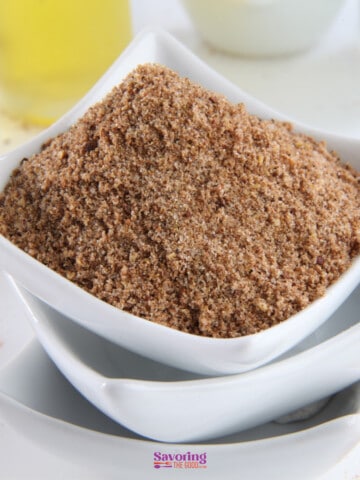
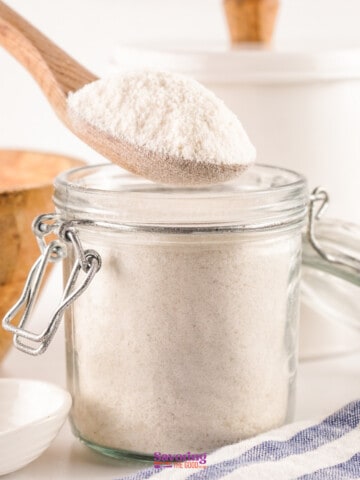


Comments
No Comments